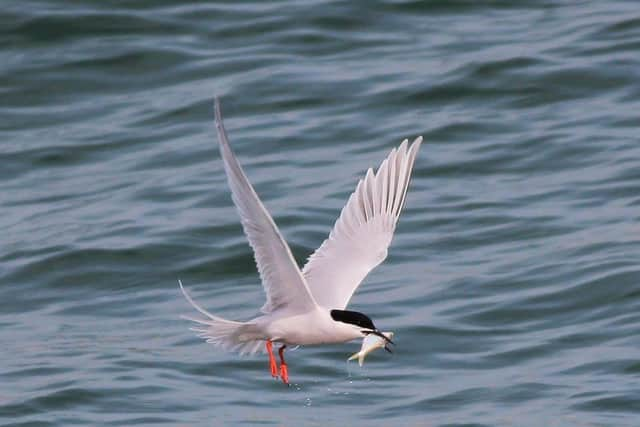Rare wild birds among many species hit by ‘unprecedented’ avian flu outbreak
Bird flu has been found at scores of poultry farms and commercial premises across the UK in the past year, while the disease has also ripped through breeding colonies of seabirds, killing thousands in some sites.
In Scotland, tens of thousands of migrating geese over-wintering on wetlands have been blamed for the spread of the disease.
Advertisement
Hide AdAdvertisement
Hide AdIt has so far killed incalculable numbers of seabirds, including members of the world’s largest Northern gannet colony on the Bass Rock in the Firth of Forth.


Puffins, ducks, herring gulls and guillemots are among other seabirds to die after exposure on the Bass Rock and the Isle of May.
And scavenging on the remains of dead geese is thought to blame for the death of a white-tailed eagle chick on the Isle of Mull. Another three chicks on different nests are also feared to have succumbed to avian influenza after their parents brought infected carcasses to them.
South of the border, the Environment Department (Defra) and Welsh Government have set out new guidance to land managers, the public and conservation groups to curb the impact of bird flu in wild birds, while protecting health and the countryside.
The National Trust, which has seen devastating outbreaks at sites it cares for such as the Farne Islands off the coast of Northumberland, welcomed the strategy, but warned much of the guidance was “too little, too late”.
The guidance includes advice for landowners on how to make natural areas safe for the public, such as signs to warn them of the risks, and having contingency plans in place to allow them to respond quickly to outbreaks.
It also sets out the Government approach to monitoring and better understanding the spread of avian influenza in wild bird populations.
Researchers have already received £1.5 million to develop new strategies to tackle outbreaks of bird flu.
Advertisement
Hide AdAdvertisement
Hide AdThe current outbreak of H5N1 bird flu, which began in October last year, is being described by officials as “unprecedented in its scale and the breadth of species affected”.
It is the longest and largest such outbreak on record in the UK, continuing beyond the normal winter period for the disease and hitting wild birds and breeding colonies of seabirds not normally affected.
Monitoring by the Animal and Health Plant Agency in the outbreak has shown more than 1,500 found dead wild birds testing positive for the disease, recovered from more than 360 locations and including 61 species.
Bird flu has been detected in breeding seabirds which are already considered to be struggling, including roseate terns, puffins and herring gulls, which are all “red listed” over conservation concerns.
Officials warn that high levels of mortality caused by avian influenza could have serious impacts on England and Wales’s breeding seabird populations.
Rosie Hails, director of science and nature at the National Trust, said: “The impact on our seabird colonies has been devastating with over 5,000 birds alone found dead on the Farne Islands off the coast of Northumberland which at the time weren’t able to be tested, and we believe these numbers to be sadly just the tip of the iceberg.”
Comments
Want to join the conversation? Please or to comment on this article.